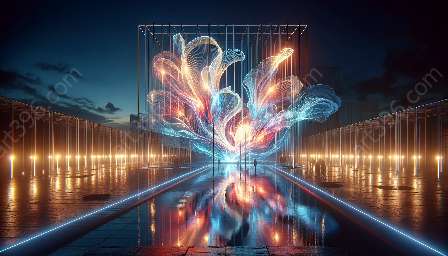Light art is a fascinating medium that relies on the interplay of various elements to create captivating visual experiences. One of the key elements in light art is the use of color, and understanding color harmony and balance is crucial to creating impactful and visually pleasing works of light art.
When discussing the role of color in light art, it is important to delve into the ways in which different colors can be harmoniously combined to evoke specific emotions and moods. This exploration of color in light art will shed light on the ways in which artists strategically employ color to enhance the overall impact of their creations.
The Role of Color in Light Art
Color plays a pivotal role in the realm of light art, where it is utilized to convey meaning, influence perception, and evoke emotional responses. In the context of light art, color has the power to transform a static environment into a dynamic and immersive space, allowing viewers to engage with the artwork at a heightened sensory level. The careful selection and arrangement of colors in light art have the potential to elicit a range of emotions, from serenity and tranquility to excitement and energy.
Understanding Color Harmony and Balance
In the context of light art, color harmony refers to the pleasing arrangement of colors to create a sense of visual unity and coherence. It involves the deliberate combination of colors that complement and enhance each other, resulting in a visually balanced and aesthetically pleasing composition. Achieving color harmony in light art involves an understanding of color theory, including concepts such as complementary, analogous, and triadic color schemes.
Furthermore, balance in light art relates to the distribution of colors within an artwork to create a sense of equilibrium and visual stability. Balancing colors effectively ensures that no single color overwhelms the composition, and that each color contributes to the overall aesthetic impact without dominating the visual experience. Balancing colors in light art involves careful consideration of factors such as intensity, proportion, and placement to achieve a harmonious and coherent visual outcome.
Impact of Color Harmony and Balance in Light Art
Color harmony and balance in light art significantly influence the way viewers perceive and engage with the artwork. A well-executed harmony of colors can create a sense of tranquility and cohesion, while a balanced distribution of colors can contribute to the overall visual impact and appeal of the artwork. The deliberate use of color harmony and balance allows light artists to control the emotional resonance and visual coherence of their creations, shaping the viewer's experience and interpretation of the artwork.
Conclusion
In conclusion, the role of color in light art is multi-faceted and deeply impactful. Understanding color harmony and balance in the context of light art is essential for creating compelling, immersive, and emotionally resonant visual experiences. By exploring the significance of color in light art and its effects on the overall aesthetic and emotional experience, artists and enthusiasts gain valuable insights into the complex interplay of color, light, and perception in the realm of artistic expression.

